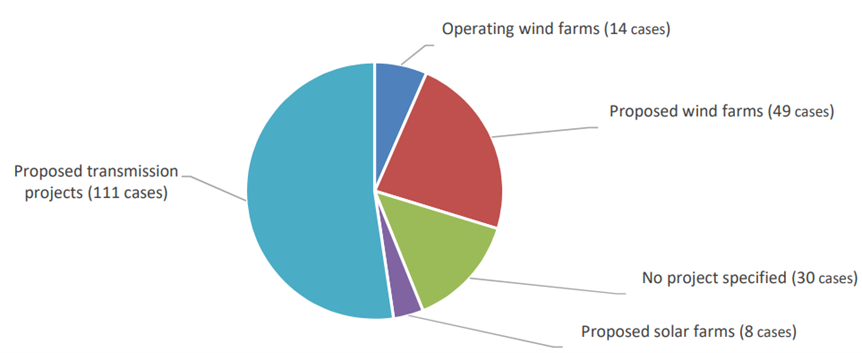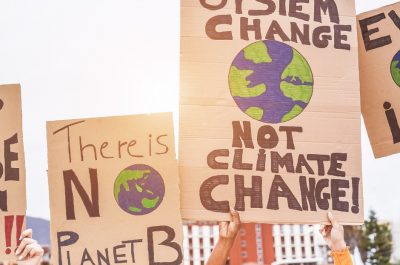Transmission infrastructure: How’s the serenity?
An iconic image in Australian film history is Darryl Kerrigan, suburban everyman, and genuine good bloke, looking approvingly over his fence at the enormous power lines abutting his backyard, while his son Dale earnestly narrates “He reckons powerlines are a reminder of man’s ability to generate electricity”. It was funny at the time because it was so strange to look at big bits of infrastructure with such a positive and admiring attitude. Only now, 25 years after The Castle was made, it is becoming increasingly apparent that few people share Darryl’s views. The issue is social license and it’s just as critical to the energy transformation and our nation’s decarbonisation as new transmission.
It is an issue on which transmission network service providers are increasingly focused, both through improved engagement processes with communities and landholders and advocacy on the need for a shared vision for industry, communities and regulators on what good social license looks like to support their objective to deliver better community outcomes.
Developing Australia’s transmission network is vital to achieving a net zero emission electricity grid. Working as large extension cords, transmission lines connect renewable power from where it is generated, often in regional and rural areas, to where it is needed in our towns and cities. It also links our states and territories across borders to achieve a fully connected electricity grid that can use excess power from one state where the sun is shining and wind is blowing, in another where it isn’t.
In transmission development, social license is a catch-all phrase for everything that needs to happen so landholders and communities are comfortable with a development going ahead in their patch. Social license is something any commercial operation needs to achieve its goals. It is critical when that goal is to facilitate the transformation of the energy system – opening vast new areas (often on private land) for renewable energy development and connecting regions to reduce generation costs and improve energy security and reliability.
Add into the mix a complex and fragmenting regulatory, planning and investment framework and it is almost inevitable that some communities will feel like they’re not being appropriately consulted and heard. Indeed, the Australian Energy Infrastructure Commissioner saw a record number of complaints in 2021, with more than half of them relating to transmission.[1]
Figure 1 – Number of cases received in 2021
[Source: Office of the Australian Energy Infrastructure Commissioner]
Most of these complaints related to projects in Victoria, with fewer in New South Wales and only one in Queensland. The transmission complaints covered a wide range of issues, with the most common being community engagement, planning process, amenity, natural environment, and economic loss.
In its made public last week, Energy Infrastructure Commissioner, Andrew Dyer made wide-ranging initial observations on potential systemic issues that relate to the social license challenge. The report includes:
General observations
- It will be a steep learning curve for industry and regulators as it has been decades since large scale transmission projects have been planned and deployed.
- There will need to be clearly visible leadership, ownership and accountability for these major projects, as well as appropriate and effective governance with representation from all major stakeholders.
Design and planning
- Design and routes should be carefully considered, including considering emerging and maturing technologies that can reduce community impact.
- There is a need for updated planning processes and guidelines to assist with the design and assessment of projects across a range of parameters (e.g. setbacks from transmission lines).
- The multi-corridor approach to route selection can give rise to widespread opposition.
Community engagement
- Landholder cooperation is vital and sufficient time and funding must be dedicated to developing an effective working relationship.
- Effective community and landholder engagement will need to adapt to a diverse range of circumstances (e.g. suburban residents, hobby farmers, specialised operations and broad acre farming)
Compensation
- Current compensation arrangements may be seen as inadequate when compared with landholder arrangements for hosting wind and solar farms, which could affect the success rate of negotiated agreements for hosting transmission lines
The Kerrigans may have admired our ability to generate electricity, but they certainly didn’t roll over when their home was compulsorily acquired to build a new airport runway. Their awful experience with the process highlights the need to prioritise negotiated outcomes with landholders in the planning and investment process.
A range of work is underway seeking to improve social license outcomes for new transmission investment, including:
- The ongoing work of the Australian Energy Infrastructure Commissioner discussed above
- Industry, consumer and landholder groups are to develop practical social license guidelines for co-existence between transmission infrastructure and agricultural communities
- The Australian Energy Market Commission (AEMC) is considering social license in Stage 2 of its , and is currently consulting on a draft recommendation that:
- the existing obligations for transmission businesses to build and maintain social license are largely appropriate, and
- the current cost recovery arrangements are largely appropriate for transmission businesses to recover their efficient costs of obtaining social license for major projects.
The draft findings of the AEMC further highlight the importance of ongoing engagement between industry, communities and landholders. They also show how important it is for the Australian Energy Regulator (AER) to be equally engaged throughout this process. The more engaged the regulator is, the better it can assess and approve prudent and efficient costs to obtain social license that align with community and landholder expectations of industry best practice. This is a high priority for our transmission networks.
We all want a world where the Kerrigans’ experience is a fanciful film storyline and not a Four Corners special report.
[1] 2021 Annual Report of the Office of the Australian Energy Infrastructure Commissioner, p.8.


